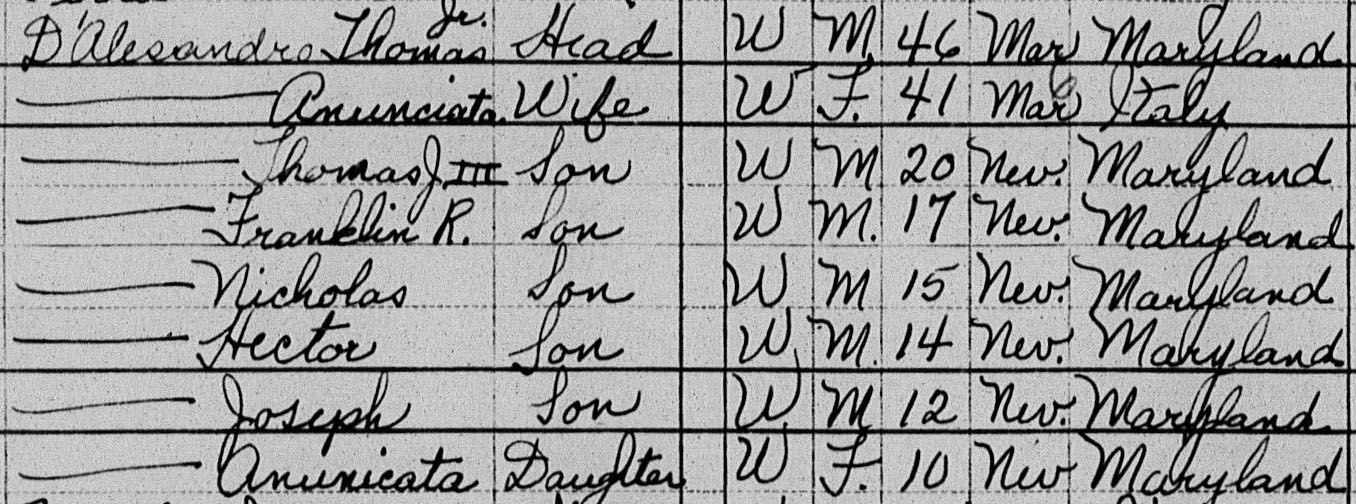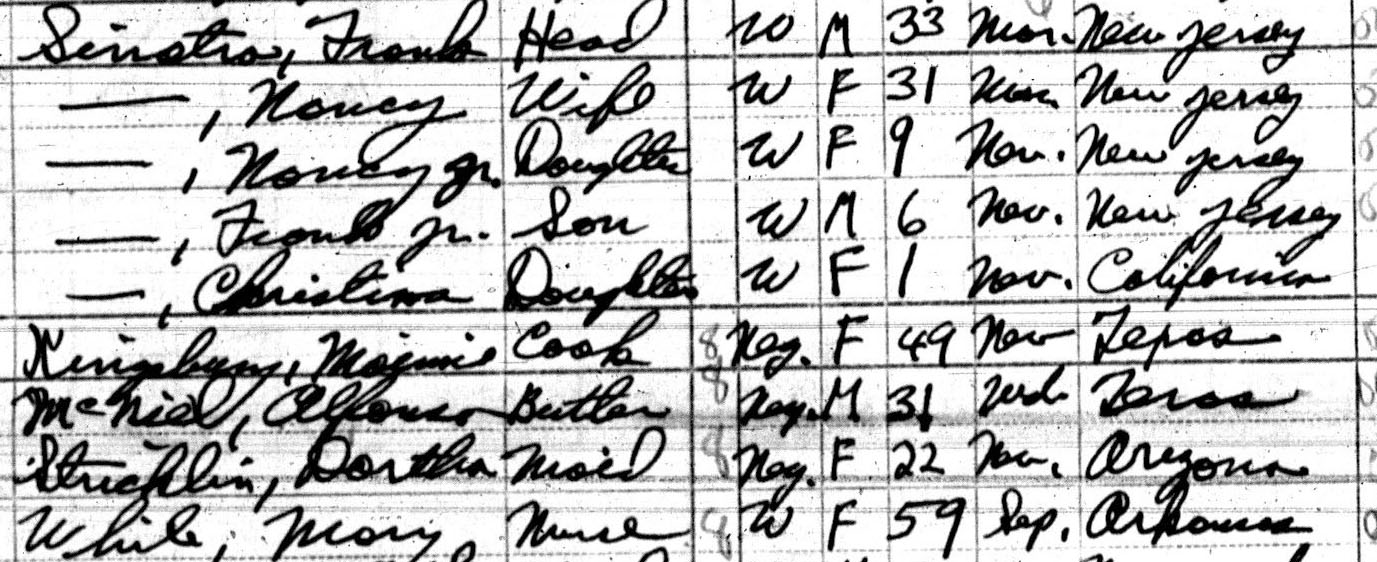'And So You Do' (aka census records of the rich and famous)
Our History Lab has been on a hunt for notable people in the 1950 census. In another post, I wrote a bit about the “thrill of the chase.” I asked Ashley Tourtelot, a lab member and Colgate senior, to reflect further on what drives her to go looking for one person, and then another, and then another. She put it this way:
The task begins once you have a name in mind, and from then on, you partake in a mini scavenger hunt. First, you search for the person adding state and county, but you are left with nothing after screening ten, maybe twenty, pages of results. You are forced to narrow your search, do some extra digging, and learn more about the person you knew very little about. Suddenly, finding a person becomes more meaningful because you are not looking for simply a name anymore; you are looking to find a person who is at first lost in the record. Then you finally narrow your search down, to be met with another series of pages to look over. As you go through each page, you feel yourself getting closer and closer to finding that name because you are in the home stretch, and without expecting it, but knowing you have the pieces there, suspense and expectancy shift into rapid reward. It is like putting the last piece of the puzzle in. The immediate satisfaction of recovering that name, knowing that the person is there, makes you want to do more, and so you do.
I think Ashley puts her finger on what makes the census search so satisfying. It is like Wordle or Sudoku, a (usually) solvable puzzle that is just difficult enough. But, unlike those games, it also feels meaningful. It feels like an act of recovery, or rescue from obscurity. It feels like finding a person.
Who does our lab go looking for? Ashley had a bit to say about that too. She reminds us that while the 1950s are “far enough in the past to hit that seventy-two-year marker and become public,” they are “not that long ago.” She continues: “When I think of the 50s, I think of my grandparents. So there is that somewhat distant connection to a time you did not physically inhabit but have some relationship with indirectly, and that reality drives your search.”
This post will be updated occasionally and will serve to collect many (though not all) of our 1950 census finds. It comprises mostly the famous or otherwise notable, the people who lab members thought of when they thought of their grandparents’ generation.
In alphabetical order, using the name with which the person is presently known:
Ruth Bader-Ginsburg
Found by Ashley Tourtelot
Kings County, NY, E.D. 24-258, Sheet 73
 The sheet notes that Nathan Bader was a naturalized citizen and that he owned his own business.
The sheet notes that Nathan Bader was a naturalized citizen and that he owned his own business.
W.E.B. Du Bois
Found by Dan Bouk, following Leah Massa’s lead
Manhattan, New York County, New York, E.D. 31-1756, Sheet 1
 The 82-year-old Du Bois lived in not only the same E.D., but the same apartment building as Thurgood Marshall (below). Both lived at 409 Edgecomb Avenue.
The 82-year-old Du Bois lived in not only the same E.D., but the same apartment building as Thurgood Marshall (below). Both lived at 409 Edgecomb Avenue.
Thurgood Marshall
Found by Leah Massa
Manhattan, New York County, New York, E.D. 31-1756, Sheet 3
 Marshall is listed as a “lawyer” for the “NAACP.” This is four years before Marshall won the Brown v. Board of Education case. Marshall’s name happened to fall on a sample survey line and so was asked further questions, including about this income: in 1949, he earned $7,500.
Marshall is listed as a “lawyer” for the “NAACP.” This is four years before Marshall won the Brown v. Board of Education case. Marshall’s name happened to fall on a sample survey line and so was asked further questions, including about this income: in 1949, he earned $7,500.
Nancy Pelosi
Found by Leah Massa
Baltimore, Maryland, E.D. 4-96, Sheet 74
 Nancy is here recorded as Anunciata. Her father Thomas is listed as Mayor of Baltimore and her mother (also Anunciata, a naturalized citizen born in Italy) as “proprietor” of a “Demonstration Office” (after “Beauty Shop” has been crossed out).
Nancy is here recorded as Anunciata. Her father Thomas is listed as Mayor of Baltimore and her mother (also Anunciata, a naturalized citizen born in Italy) as “proprietor” of a “Demonstration Office” (after “Beauty Shop” has been crossed out).
Elvis Presley
Found by Leah Massa
Memphis, Shelby County, Tennessee, E.D. 98-4, Sheet 22

Frank Sinatra
Found by Leah Massa
Los Angeles, LA County, California, E.D. 66-783, Sheet 24
 This record shows Sinatra’s entire household, which included a cook, butler, maid, and nurse. The name of the cook, Maimie Kingsbury (or something like that), fell on a sample line and so we know that this 49-year-old African American woman from Texas was paid $1,920 in 1949. Frank Sinatra’s name also fell on the sample line and he is reported as earning 9U, which appears to have been the code the top income bracket.
This record shows Sinatra’s entire household, which included a cook, butler, maid, and nurse. The name of the cook, Maimie Kingsbury (or something like that), fell on a sample line and so we know that this 49-year-old African American woman from Texas was paid $1,920 in 1949. Frank Sinatra’s name also fell on the sample line and he is reported as earning 9U, which appears to have been the code the top income bracket.